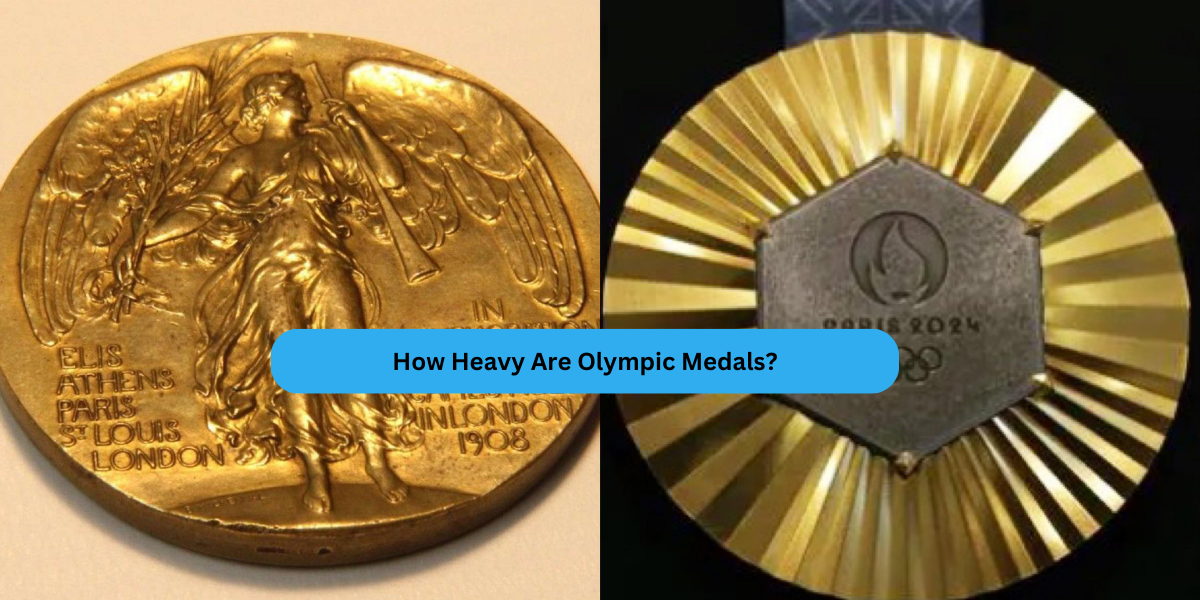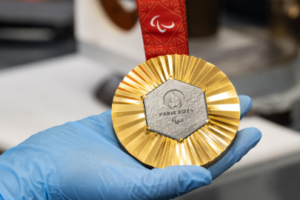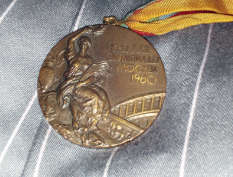Olympic medals are more than just symbols of athletic achievement they are pieces of history, showcasing the dedication of the world’s best athletes. But have you ever wondered how heavy Olympic medals actually are? Whether you’re curious about their weight, what they’re made of, or how they’ve changed over time, this article will provide all the answers.
In this comprehensive guide, we’ll explore the weight of Olympic medals, the materials used in their design, and fascinating facts about their evolution. By the end, you’ll have a deeper appreciation for these iconic symbols of victory.
The Weight of Olympic Medals: Key Facts
1. How Much Do Olympic Medals Weigh?
The weight of Olympic medals varies depending on the Games and the design specifications set by the host country. Here are some notable examples:
Tokyo 2020 Summer Olympics:
- Gold medal: Approximately 556 grams (19.6 ounces)
- Silver medal: Approximately 550 grams (19.4 ounces)
- Bronze medal: Approximately 450 grams (15.9 ounces)
PyeongChang 2018 Winter Olympics:
- Gold medal: 586 grams (20.7 ounces)
- Silver medal: 580 grams (20.5 ounces)
- Bronze medal: 493 grams (17.4 ounces)
Rio 2016 Summer Olympics:
- Gold medal: 500 grams (17.6 ounces)
- Silver medal: 500 grams (17.6 ounces)
- Bronze medal: 500 grams (17.6 ounces)
2. What Influences the Weight of Olympic Medals?
The weight of Olympic medals is influenced by several factors, including:
Material Composition:
- Gold medals are primarily made of silver with a thin layer of gold plating.
- Silver medals are 92.5% pure silver.
- Bronze medals are typically an alloy of copper and zinc.
Size and Thickness:
- The diameter and thickness of the medals can vary, which directly impacts their weight.
- For example, Tokyo 2020 medals measured 85mm in diameter and 7.7mm-12.1mm in thickness.
Design:
- Some host countries incorporate intricate designs or unique materials that can add to the medal’s weight.
The Materials Behind Olympic Medals
1. Gold Medals
Despite their name, modern gold medals are not solid gold. Instead, they are composed of:
- 92.5% Silver: The base of the medal.
- 6 grams of Gold Plating: The minimum gold content required by the International Olympic Committee (IOC).
2. Silver Medals
Silver medals are made from sterling silver, containing 92.5% pure silver. They are often identical in size and weight to gold medals but lack the gold plating.
3. Bronze Medals
Bronze medals are typically made from an alloy of:
- 95% Copper
- 5% Zinc
- They are the lightest of the three medal types.
A Historical Perspective on Olympic Medals
1. The Evolution of Weight and Design
Ancient Olympics:
Winners were awarded olive wreaths rather than medals.
First Modern Olympics (Athens 1896):
Winners received silver medals, as gold medals were not introduced until the 1904 St. Louis Games.
Changing Designs:
Over the years, the design of Olympic medals has evolved to reflect the culture and identity of the host country. For example, Tokyo 2020 medals were made from recycled electronic devices donated by the public.
2. Notable Medal Facts
Heaviest Medal:
The heaviest Olympic medal to date was from the PyeongChang 2018 Winter Olympics, weighing 586 grams.
Lightest Medal:
Early Olympic medals, such as those from the 1900 Paris Games, were much smaller and lighter, often weighing less than 100 grams.
Unique Materials:
The 2010 Vancouver Winter Olympics featured medals with undulating surfaces to represent the mountainous terrain of Canada.
Common Questions About Olympic Medals
1. Are Olympic Medals Real Gold?
No, modern gold medals are not solid gold. They are made of sterling silver with gold plating. The last solid gold medals were awarded in 1912 during the Stockholm Games.
2. Why Are Bronze Medals Lighter?
Bronze medals are made from copper and zinc, which are less dense than the silver and gold used in higher-tier medals.
3. What Happens to Unused Medals?
Unused Olympic medals are often kept as souvenirs, donated to museums, or melted down for future use.
Conclusion
Olympic medals are not just awards; they are works of art that carry immense symbolic value. While their weight and composition have evolved over the years, they remain a powerful testament to human achievement and perseverance. Whether it’s the gleaming gold, lustrous silver, or humble bronze, each medal tells a unique story of triumph and dedication.
Now that you know the fascinating details about Olympic medals, you can appreciate the craftsmanship and history behind these iconic symbols of victory. Want to learn more about Olympic history or the athletes who earn these medals? Explore our blog for more insightful articles!




